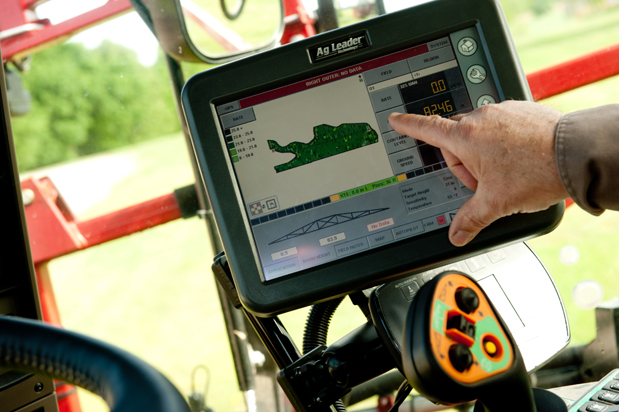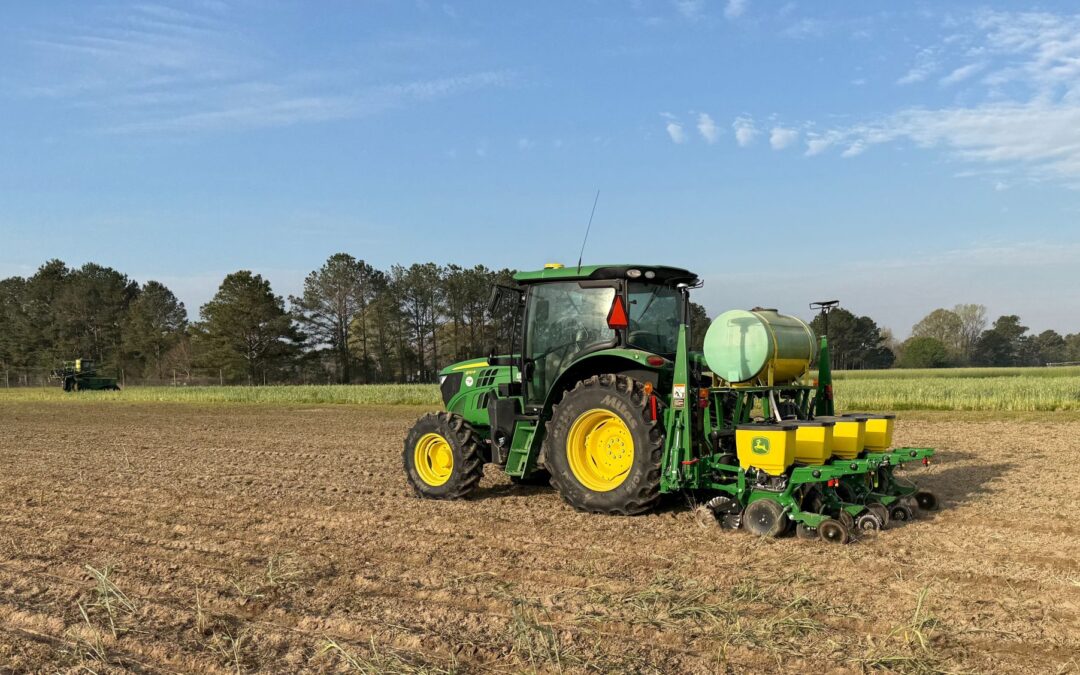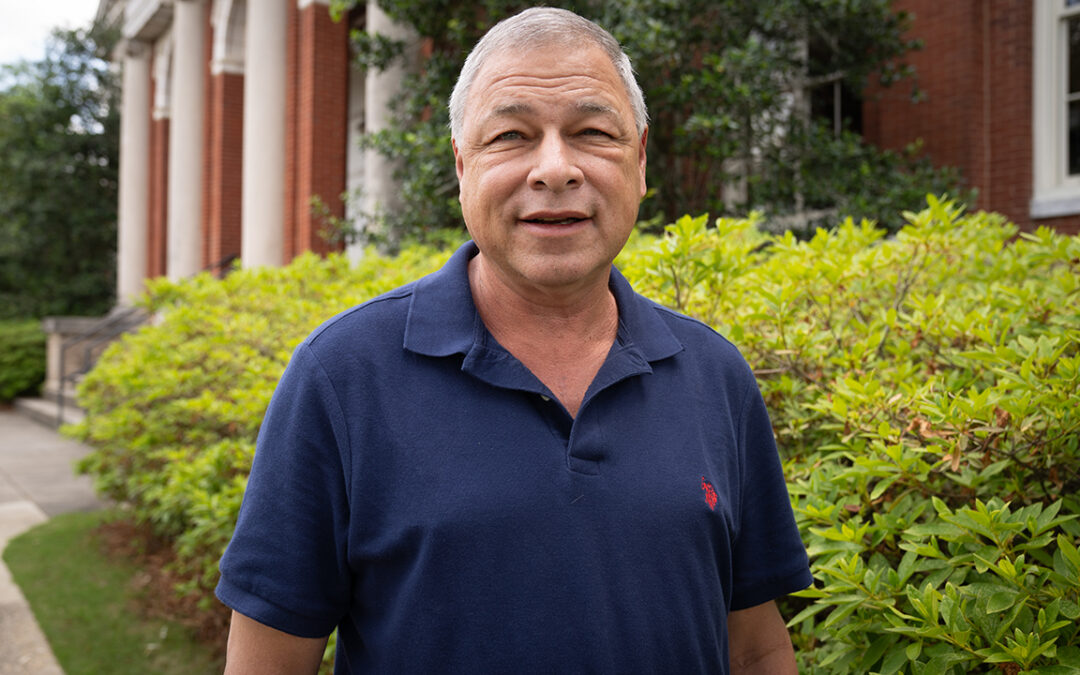
Auburn University is working with other universities and organizations to develop a secure database for U.S. farmers.
by PAUL HOLLIS
How big is data in U.S. agriculture? Consider that one acre of corn can generate seven gigabytes of data. With approximately 93 million acres of the crop currently in production, that’s 145 million DVDs filled with information—from just one crop.
The amount of data in the industry has exploded in recent years, thanks in part to precision agriculture and advances in equipment and computer technology.
“From an agricultural standpoint, data is our currency today,” said Steve Taylor, associate dean for research in Auburn University’s Samuel Ginn College of Engineering and professor in the Department of Biosystems Engineering. “It’s really the new currency across all industrial sectors of our economy. Data is driving everything.”
Making this currency more valuable and secure for farmers is one of the goals of the Agricultural Data Coalition, an organization focused on designing, creating and managing a central repository where producers can store their information and supervise how it is accessed.
Auburn University, along with other universities and organizations, is a founding member of the ADC and now—through the Alabama Agricultural Experiment Station—is participating in a nationwide pilot project to demonstrate how a neutral repository of farm data would work to connect information among growers, service providers and machines.
With such a database, farmers could securely store and administer the information collected by their tractors, harvesters, aerial drones and other devices. Over time, that data could be synced and transmitted in an efficient and uniform way to third parties, including researchers, crop insurance agents, government officials, farm managers, input providers or any trusted advisor the farmer chooses.
“The ADC is a group of universities, industry partners, and agricultural service providers that have come together to support producers in this new era of big data, or data-driven agriculture,” Taylor said. “We have new service providers and new equipment manufacturers, and they all crank out data in different formats. Also, there are ownership issues.
“This group will try to come up with a solution that will help farmers manage data from multiple sources, in the spirit of helping them make better management decisions.”
A triple mission
The coalition’s three primary purposes, Taylor said, include educating the industry and the public about the value and impact of data, facilitating collaborative research and educational activities, and creating a farmer-controlled repository that is secure and flexible.
“If you’re managing data, it comes from different sources, including multiple hard drives and flash drives that may be scattered everywhere,” he said. “People spend a lot of time trying to corral data and manage it, and that’s time taken away from making management decisions. We spend more time trying to find something and converting it to the right format than we do analyzing the data and making good decisions.”
A central repository, Taylor said, would be a neutral territory—like a bank safe-deposit box—where farmers can place their data.
“It’s not about trying to compete with other service providers but to connect with these providers,” Taylor said. “If there are service providers you’ve been dealing with for years, this is not trying to end that but rather to help connect with them to share data. The idea is to help these service providers focus more on innovation—coming up with new products, new solutions and new decision-making tools.”
Ability to share
Data is an especially valuable commodity at Auburn’s E.V. Smith Research Center in Shorter, where field trials and experiments are the basis for making unbiased recommendations to farmers.
“We generate a tremendous amount of data, and there’s always a question of what to do with it,” said Greg Pate, center director. “It can become a difficult task because the information comes from so many sources. Initially, it takes a lot of time and effort to assimilate information from multiple platforms so it can be put into one database.”
The center is participating in the ADC pilot project and, in that role, has been supplying data to the repository’s trial site, Pate said. A group of growers, service providers and university researchers from different parts of the country, representing numerous commodities, are participating in the testing phase to offer feedback on pace and direction for ADC’s data bank before it is officially offered to the entire farming community.
“We’re providing information such as yield maps and other data from the research we’re conducting,” Pate said. “There’s a limited amount of storage right now since we’re in the pilot phase, but once the repository goes live, there will be room for all of the data. We’ve been working since this past October to populate the data, entering yield data from 2016.”
From a producer’s standpoint, the ability to share data with anyone they choose is a benefit, Pate said.
“Also, farmers will have one database for all the information on their farm, enabling them to access long-term data and identify trends that might be occurring,” he said.
Streamlined process
The repository will allow university researchers to have all of their data in one location and to readily share it with farmers.
“Researchers can share information among themselves, too,” Pate said. “We have experiments being carried out simultaneously on various stations throughout the state, and currently there’s no system for one station to look at the data from an experiment being conducted at another. This would provide such a service and enhance our research capabilities.”
The sheer amount of data expected to be generated from farms soon will be unmanageable for individual producers, presenting challenges in the areas of privacy and security, and consolidations within the industry only serve to heighten these challenges, said Mary Kay Thatcher, senior director of congressional relations for the American Farm Bureau.
“Ongoing mergers in the agricultural industry could result in just three or four seed/chemical companies controlling approximately 90 percent of the farm data in the United States,” Thatcher said.
Currently, whenever farmers give data to equipment manufacturers or seed companies, there’s a question of whether they’ll get it back.
“With the ADC repository, farmers will control their information until they push a button and decide where it goes,” she said. “It’s their data, and they will always be able to get it back.”
Private and secure
The ADC, Thatcher said, is committed to adhering to the farm data privacy and security principals as set by the American Farm Bureau and 38 representatives from organizations and industries. It also will focus on data standards such as platform consistency and continuous quality improvement.
Subscription fees for the repository have yet to be decided, but Thatcher said they should be minimal.
“We think a lot of the data in the beginning will come from cooperatives instead of individual farmers,” she said. “It’s cheaper and easier than hiring a technician to maintain it. In that case, farmers won’t pay anything.”
A central repository also will provide opportunities for university researchers to aggregate data from different regions, she said.





